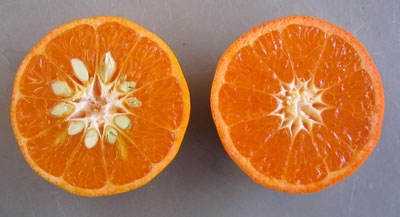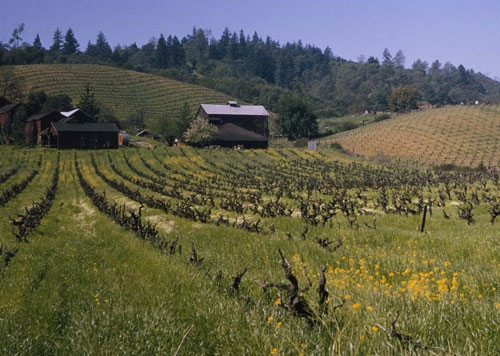UC Blogs
Turf Tidbits
March is a great time to rehabilitate your lawn by filling in bare patches with seed. The spring season offers temperatures moderate enough to foster new growth through germination of turf seeds, but it remains cool enough not to stress new grass once it begins growing and allows it time to mature and take root.
The issues to consider before you start your lawn rehabilitation job are to note the type of turf that already exists in your space so that you can get a matching blend, the amount of sun and shade the particular area might get, and the amount of water the area gets so that you get the proper seeds for your needs The materials you will want to have for the tasks are a rake, a shovel, a bag or two of topsoil made from organic matter, high quality turf seed, starter fertilizer, and a hand-watering container.
The first order of business is to isolate the area you are working on from any pets or foot traffic because turf seeds and seedlings are delicate and will be ruined by even light trampling. Secondly, you want to clear the area of any old dead turf or other dead or dying matter covering the ground you are going to work on. Once the area is cleared up and ready, you will want to dig down about 4 to 6 inches and till the soil until it is soft and workable and all of the large clods have been broken up. You will rake the area so that the ground is even with the other areas where grass is already growing and all of the dirt is uniform in size and texture and elevation. Next, generously spread the turf seed in the area you have prepared making sure to slightly overspread seed on the edges as evenly as possible. Finally, you will cover the seed with about an inch of topsoil which will thin out once you add water. You should not be able to see any seeds through the topsoil; at the same time you are not trying to bury the seeds any deeper than just under the surface of the soil. Once all of the topsoil has been uniformly applied and the seeds are completely covered you will very gently water the area trying to apply the watering as delicately as possible to prevent erosion of the work you just did.
You will want to inspect the area twice a day for 2 weeks to make sure that the seeds continue to maintain minimal moisture content. You want to keep the topsoil slightly moist constantly until you notice baby turf emerging. Once the new grass begins to grow you will want to scale the watering back to allow the new turf to establish its roots. A watering balance is needed at this point, you want to water thoroughly and then allow the grass to dry out almost completely before the next application of water. A starter fertilizer should be applied at this time also to encourage mature rooting and growth. You will want to closely consult the directions on the seed packaging to check for varying details. (NOTE: the Master Gardener program does not endorse the Kellogg's or Scott's products, these photos are for demonstration purposes only)
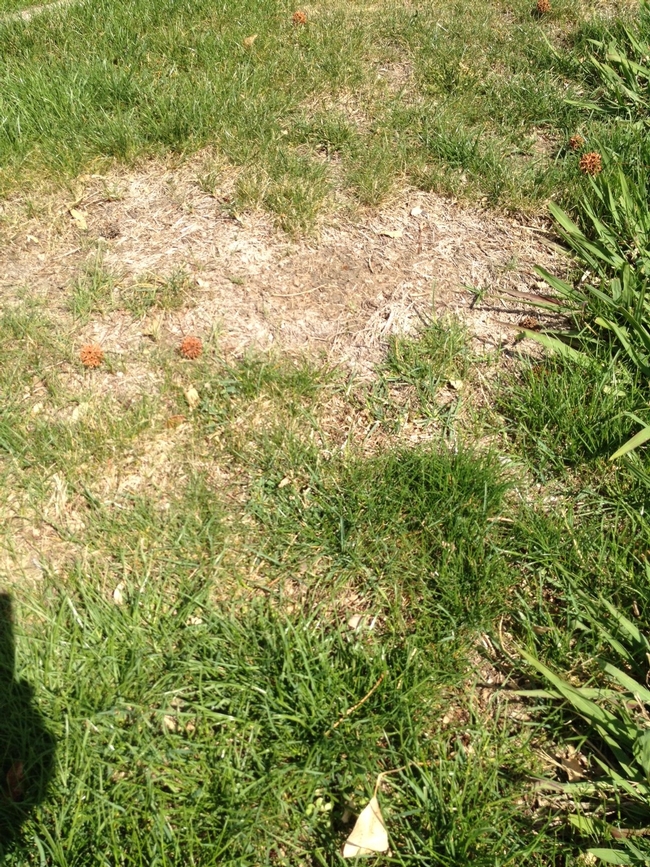
Turf that needs rehab. (photos by Ed Walbolt)
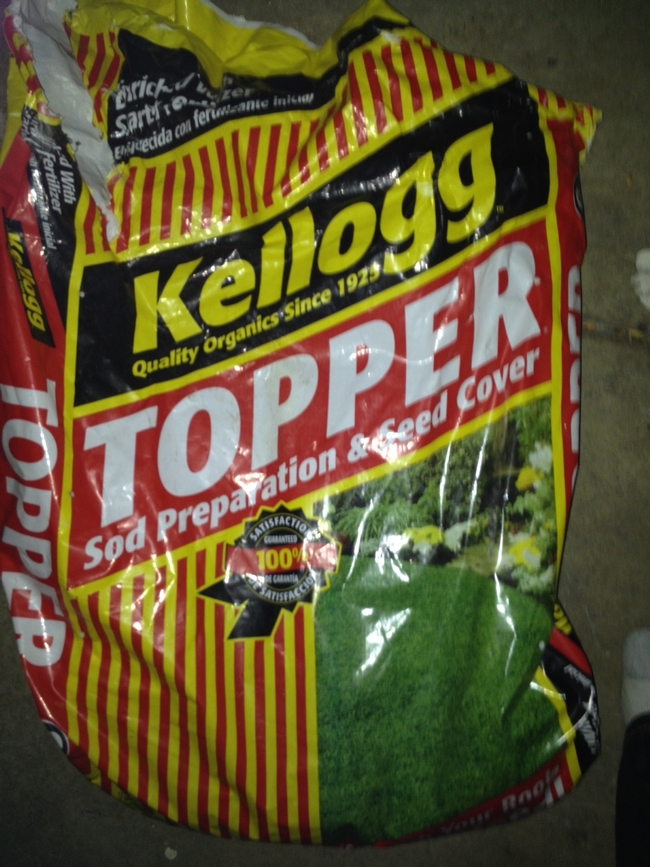
Top soil bag.
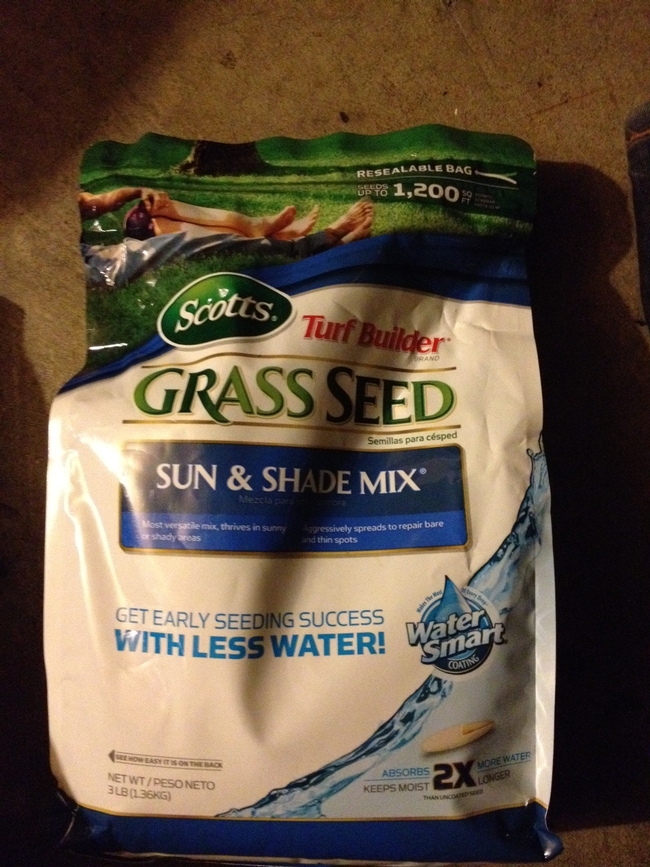
Seed bag.
UC's Tango mandarin touted in Smithsonian
UC Riverside research that resulted in the new, seedless mandarin variety Tango was featured in a Smithsonian magazine article written by Sarah C. Rich.
The story recounts how plant geneticist Mikeal Roose used irradiation on W. Murcott budwood to induce mutations that improve the fruit.
“Farmers have long selected citrus varieties that are low-seed, that have the same kinds of chromosomal rearrangements stimulated by the same thing—there’s natural radiation around all the time and it can affect the trees at any time.”
The advantage of inducing mutations, Roose explained, rather than waiting for the sun to trigger genetic variation, is that it can be targeted toward manipulating one particular feature—a kind of rapid prototyping for agriculture. The radiation accelerates the output of new genetic compositions. Each is then cultivated, screened and tested with the hope that at least one offspring will be reliably superior to its antecedent.
'Doom the Broom' demo is scheduled Thursday in Paradise
Chico Enterprise-Record
A live fire demonstration will help illustrate the need to clear growth from around structures and to be aware of the growth of Scotch, Spanish and French broom Thursday in the parking lot at 5400 Clark Road, Paradise, Calif. Glenn Nader, UC Cooperative Extension advisor for Sutter-Yuba counties, an expert in livestock and natural resources, will talk about spraying herbicides to control the weeds.
The event will go from 10:30-11:45 a.m., rain or shine. The fire demonstration will be at 11:05 a.m.
Tackling a Massive Killer
It's good to see that the UC Davis campus will host its sixth annual World Malaria Day observance. This year's event, set Wednesday, April 25 from 9...
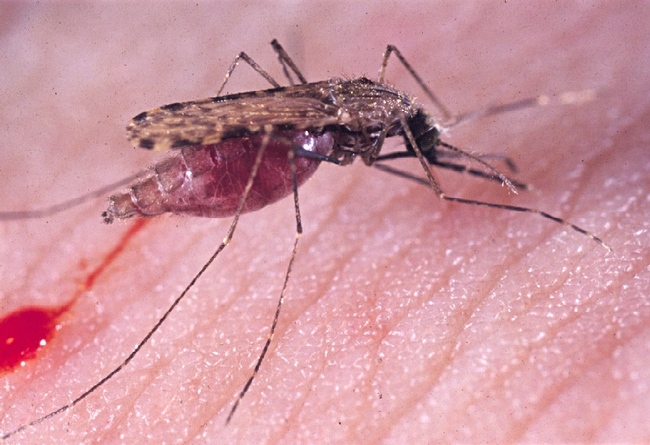
Malaria mosquito, Anopheles gambiae. (Photo by Anthony Cornel)
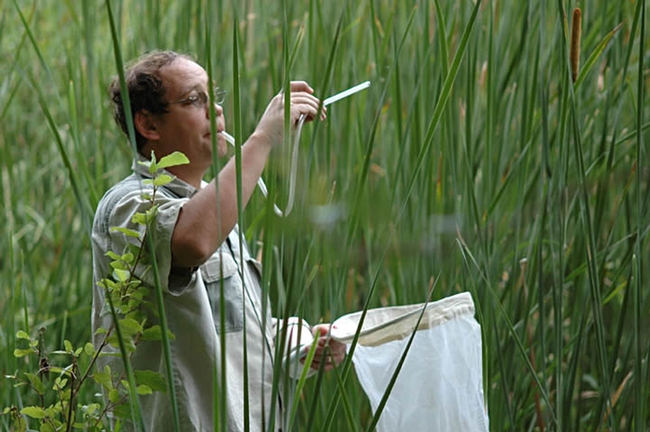
UC Davis medical entomologist Anthony Cornel collecting mosquitoes. (Photo by Rory McAbee)
UCCE teaching the next generation of farmers
Students accepted into a new farming and ranching education program being offered by UC Cooperative Extension in Sonoma County and other institutions will have their first of nine monthly meetings March 30, wrote Michael Shufro in the Santa Rosa Press Democrat.
“We recognize that the current population of farmers is aging, and that we need to get our younger farmers prepared and ranching,” said Stephanie Larson, UC Cooperative Extension advisor in Sonoma County and director of the new training program. “We’re really hoping to not only get more farmers and ranchers trained, but to increase food access and food production in Sonoma County, and also to teach more people about where their food comes from.”
Students in the program will split their time between classwork with ag teachers, field work with local farmers and business plan development with small business experts. The program will expand to include the broader farming community, connecting students with restaurants and grocers that buy local produce and the slew of farmers’ markets around the county.
“Programs like this strengthen the parts we already have and bring farmers together,” Larson said. “We used to work mainly in silos, but we’ve been breaking those silos down, and finding it works much better together than separately.”
Another blessing for Napa
Paul Franson, Napa Valley Register
On top of wine, food, arts and culture that some large cities might envy, Napa Valley has an invaluable, little-recognized asset: an uncommonly cooperative and educated wine industry.
Cosmic Rhythms and Planting According to Biodynamic Calendar
Disclaimer: This article does not express the views held or advocated by UCCE or its affiliates with regard to biodynamic gardening or farming. It only seeks to introduce the concept of biodynamics to readers as another alternative system of sustainable gardening.
On the recommendation of another Master Gardener, I enrolled in an 8-month course at the Rudolf Steiner College in Fair Oaks, California, in my quest to learn more about different systems and methods of organic gardening. Last month’s lecture was on “Cosmic Rhythms, Planting Calendars.” Although I have not quite made up my mind about the efficacy of this planting system, it was/is nevertheless interesting to learn a new way (at least new to me) of backyard gardening.
One of the beliefs held by biodynamic practitioners, is that planetary/intergalactic events somehow relate to/have practical effects on plants on Earth. For instance, one of the lecturers at the seminar asserted that certain planets such as Venus and Mercury, directly impact the plants belonging to the rose and lily families, respectively, because the geocentric orbits of those planets correspond with the shape and appearance of plants belonging to those families. Although this assertion may or may not be true, the concept of inter-relatedness between celestial and terrestrial events, is both appealing and beautiful.
Planting according to cosmic rhythms is a very complex process, as many factors (i.e., the perceived location of the sun and moon, position of the planets and constellations/stars, the equinoxes, etc.) must be taken into consideration in designing a planting schedule and what tasks to do at a particular hour and on a specific day. While one can create his/her own calendar, the Stella Natura calendar is one of several calendars upon which biodynamic gardeners rely (be forewarned that biodynamic calendars may be a bit daunting to read for the beginner, as they are filled with all sorts of symbols representing where certain planets are believed to be positioned in the zodiac, the phases of the moon, and what conjunctions and oppositions exist as between the moon and the planets). Although inconclusive, some biodynamic practitioners claim and have documented that they have experienced a better, healthier crop yield when planting according to a biodynamic calendar. It is interesting to note, however, that one of the lecturers at the seminar stated that planting according to a biodynamic calendar is very difficult, if not impossible, on a working farm due to scale and the economic realities of operating a farm (i.e., margins being razor-thin). So will planting according to a biodynamic calendar give you better yields? As the lecturers at the seminar suggested, consider experimenting and decide for yourselves.
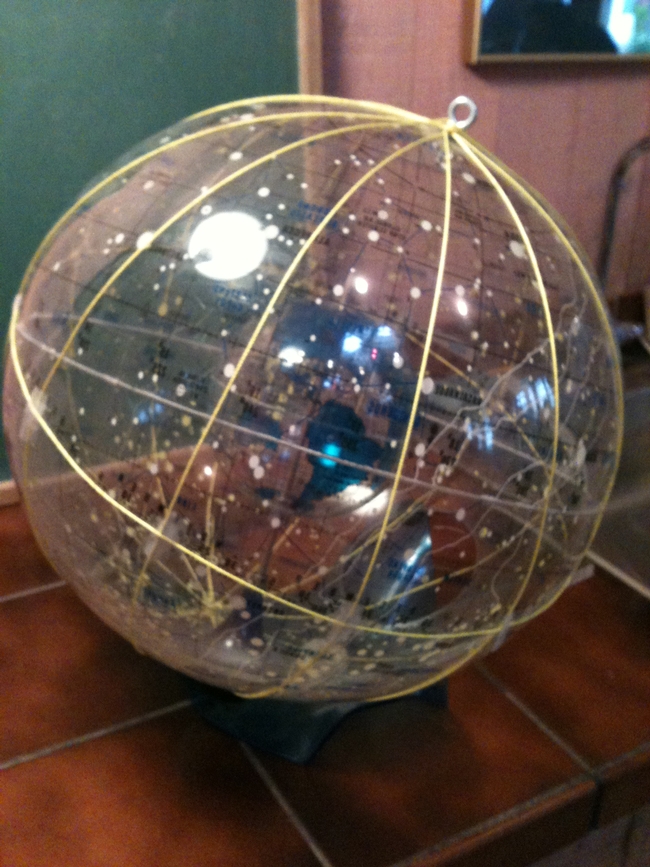
Tools used by biodynamic practitioners in understanding planetary movement. (photos by Betty Homer)
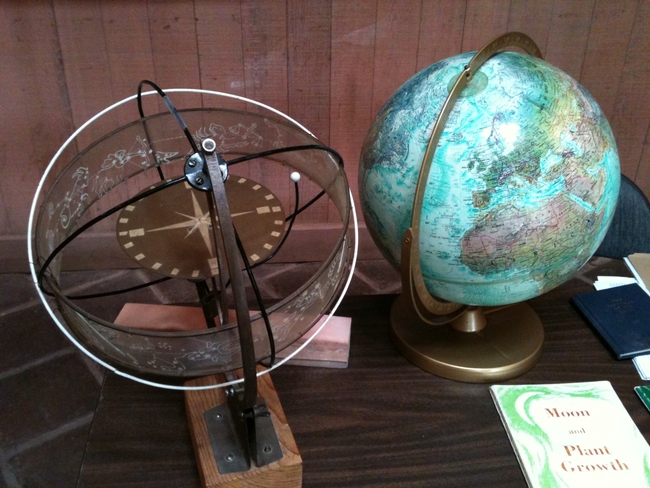
Globe


